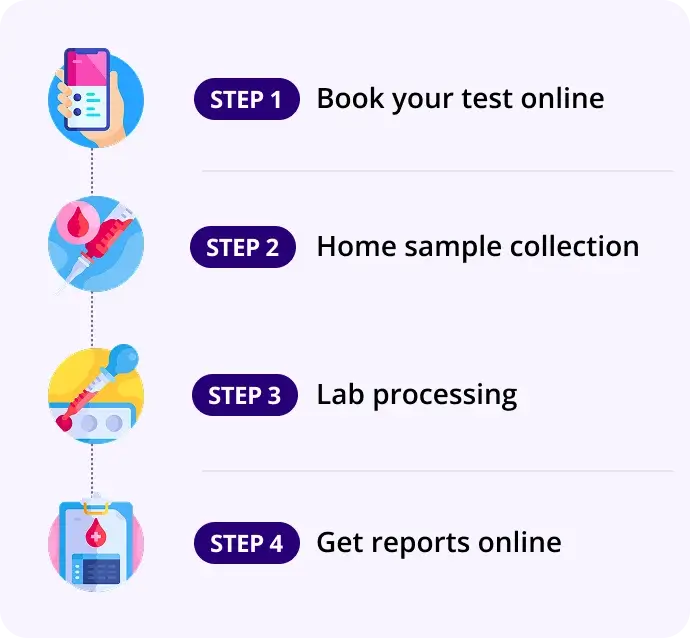Lactate
Report in 16Hrs
At Home
No Fasting Required
Details
It is a critical marker for evaluating tissue oxygenation, shock, and metabolic dysfunction
₹599₹1,100
46% OFF
🧪 What is the Lactate Test?
The Lactate test measures the level of lactic acid in the blood. Lactic acid is a byproduct of anaerobic metabolism — when cells produce energy without adequate oxygen.
It is a critical marker for evaluating tissue oxygenation, shock, and metabolic dysfunction.
❓ Why is the Test Done?
To:
- Diagnose or monitor lactic acidosis
- Assess sepsis, shock, or organ failure
- Evaluate hypoxia (low oxygen levels)
- Monitor patients with cardiac arrest, severe infections, or trauma
- Detect mitochondrial disorders or metabolic diseases
🔬 How is the Test Performed?
- A blood sample is collected from a vein (or sometimes an artery).
- The sample must be analyzed quickly or placed on ice to prevent false elevation due to glycolysis.
- Venous lactate is most commonly used; arterial lactate may be used in critical care.
📊 Normal Range
Sample Type | Normal Lactate Range |
|---|---|
Venous Blood | 0.5 – 2.2 mmol/L |
Arterial Blood | 0.5 – 1.6 mmol/L |
Values may slightly vary depending on the lab and sample handling.
📈 Interpretation of Results
Lactate Level | Possible Interpretation |
|---|---|
0.5 – 2.2 mmol/L | Normal |
2.2 – 4.0 mmol/L | Elevated – consider hypoperfusion, early sepsis |
> 4.0 mmol/L | High – indicates severe lactic acidosis, critical illness |
🧠 Associated Organs & Conditions
System | Related Conditions |
|---|---|
Cardiovascular | Shock (cardiogenic, septic, hypovolemic), cardiac arrest |
Respiratory | Hypoxia, severe asthma, pulmonary embolism |
Infectious | Sepsis, severe infections |
Metabolic | Mitochondrial disorders, liver failure, diabetic ketoacidosis |
Hematologic | Severe anemia, leukemia (tumor lysis syndrome) |
🔄 Related / Follow-Up Tests
- Arterial Blood Gas (ABG) – to assess acidosis
- Blood pH, Bicarbonate (HCO₃⁻) – metabolic acidosis indicator
- Anion Gap
- Serum Electrolytes
- Blood Culture – in sepsis workup
- Liver & Renal Function Tests
✅ Fasting Required?
Test | Fasting Requirement |
|---|---|
Lactate | ❌ No fasting required, but avoid exercise or stress before the test |
⚠️ Important Pre-Analytical Notes
- Use a tourniquet for minimal time to avoid falsely high results.
- Immediate processing or ice transport is crucial to prevent glycolysis.
- Avoid muscle exertion (e.g., walking, stress) before blood draw.
📝 Summary Table
Parameter | Details |
|---|---|
What | Measures blood lactate (lactic acid) |
Why | Evaluate hypoxia, sepsis, shock, lactic acidosis |
Normal Range | 0.5 – 2.2 mmol/L (venous) |
High Levels | Suggest tissue hypoxia, sepsis, mitochondrial dysfunction |
Associated Conditions | Shock, sepsis, cardiac/respiratory failure, metabolic diseases |
Follow-up Tests | ABG, anion gap, pH, bicarbonate, cultures |
Fasting Required | ❌ No |
How our test process works!

